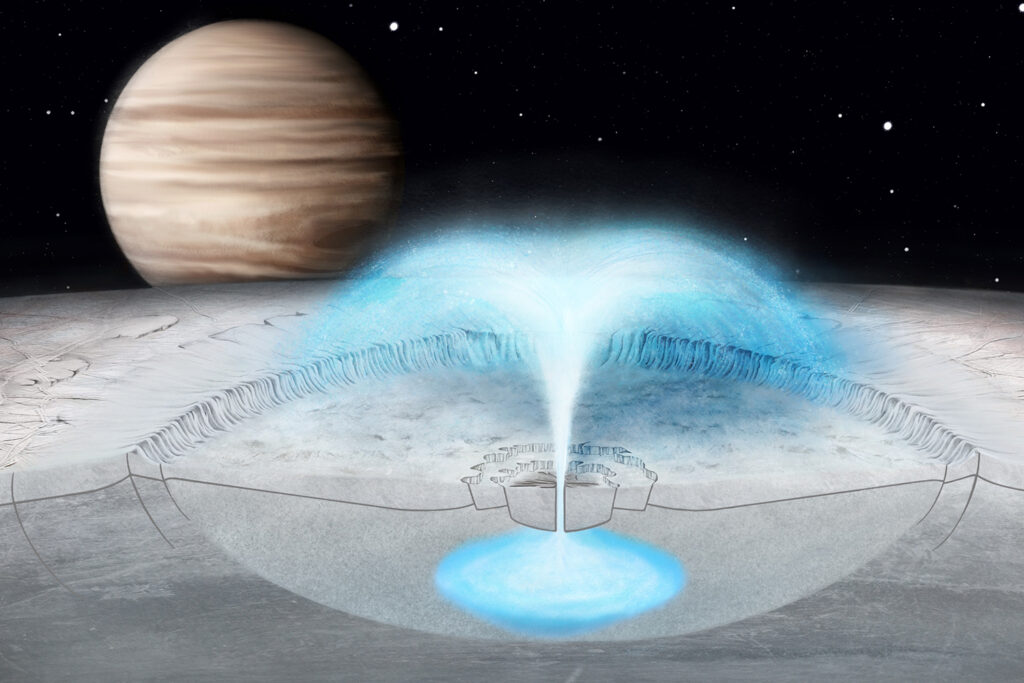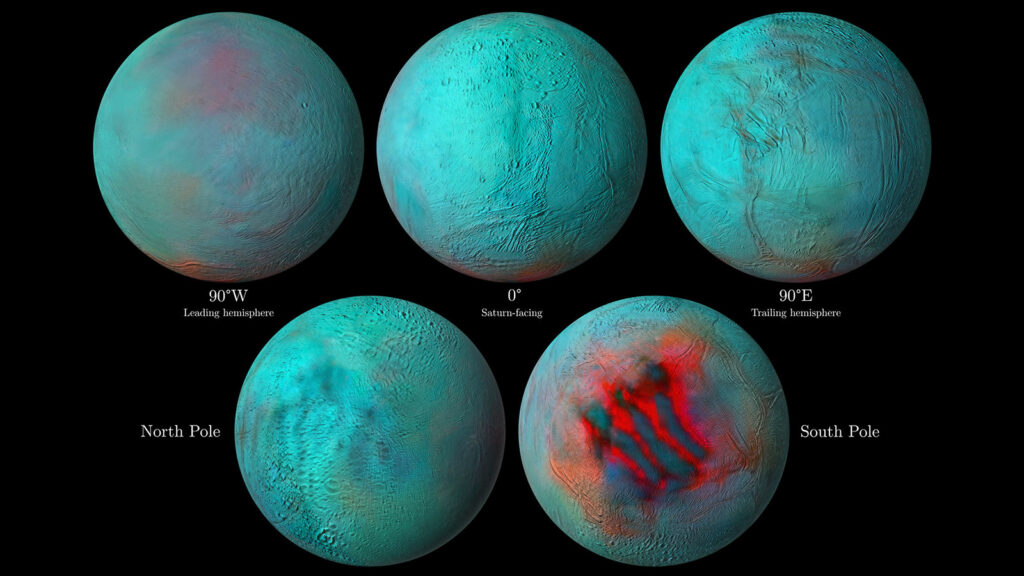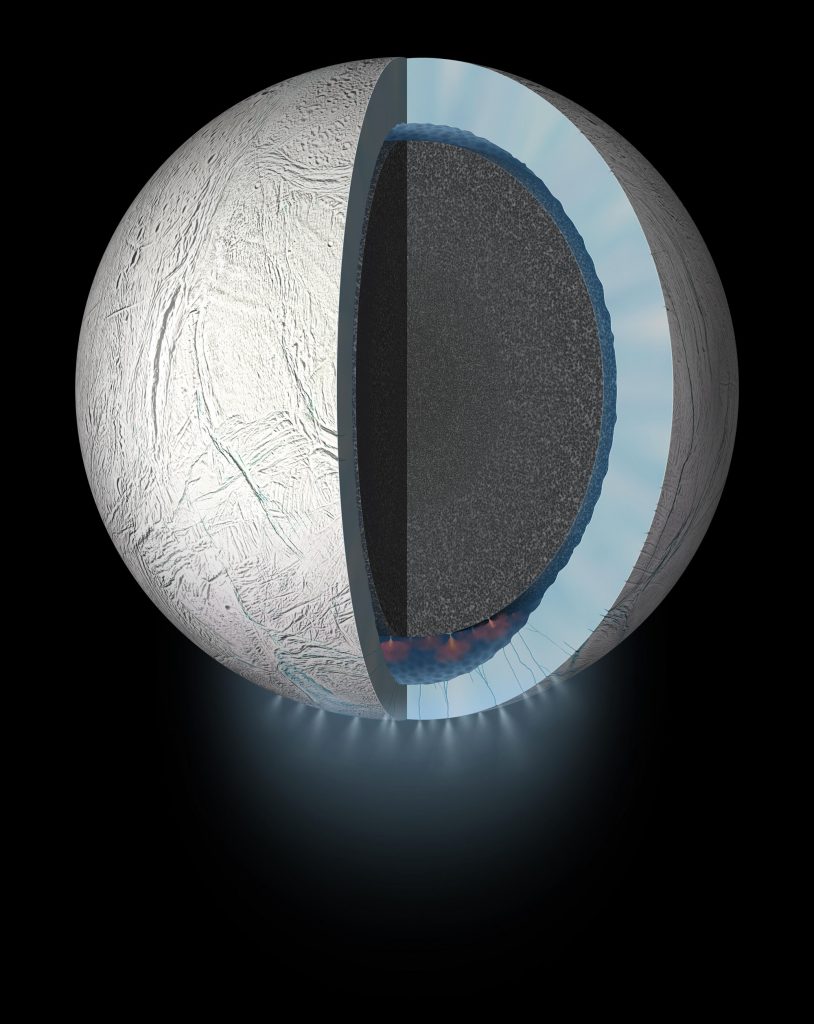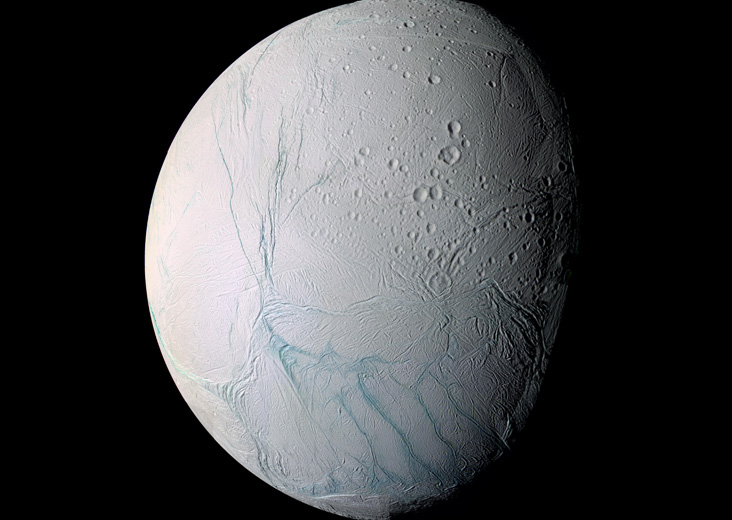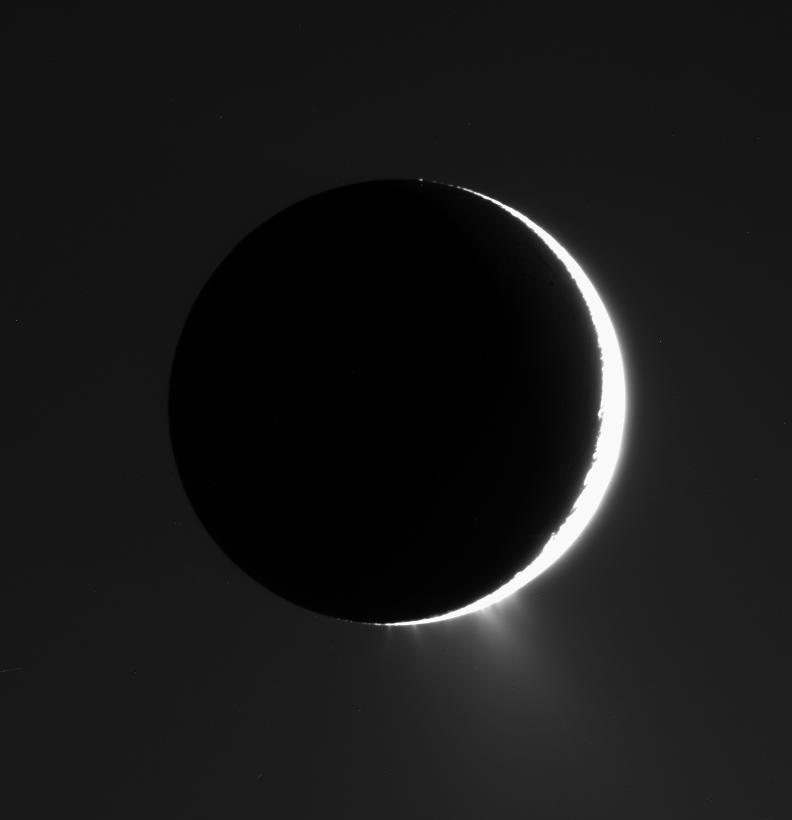Where the geysers on Europa could come from
There are several worlds - usually moons - in the solar system, where it appears that life-friendly conditions could exist in the oceans below their crust. Whether this is really the case, we will only know after we have drilled through the ice and checked (as is done in The Enceladus Mission). A new paper by researchers from Stanford University, the University of Arizona, the University of Texas and NASA's Jet Propulsion Laboratory is now lowering hopes somewhat. As the researchers show, some eruptions may not come from the depths of the oceans, but from water pockets embedded in…
